Yank-yank! What’s that?
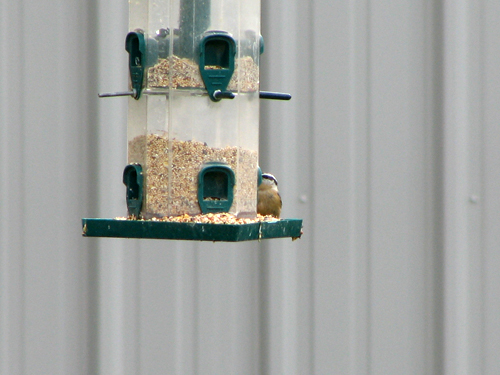
Yank-yank! Who was that masked beauty?!
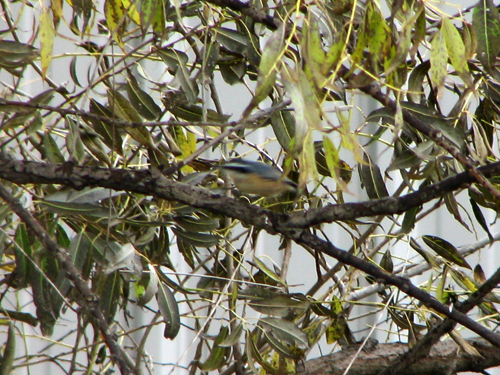
Why, it’s a Red-breasted Nuthatch – our latest yard bird. Welcome! Maybe you’ll pose for a nice photo next time?
Yank-yank! What’s that?

Yank-yank! Who was that masked beauty?!

Why, it’s a Red-breasted Nuthatch – our latest yard bird. Welcome! Maybe you’ll pose for a nice photo next time?
On September 26th we visited the Field Museum in Chicago to attend a free lecture given by the author of The Curse of the Labrador Duck. As a gift to the birding community, early registrants of the lecture were allowed free admission to the museum for the day, so we took the day off and arrived early for our first visit to the Field in several years.

We spent most of our time on the lower level, visiting several of the outstanding wild animal and bird displays, including Bird Habitats, World of Birds, Nature Walk and North American Birds. Here are some of my favorites from the day.
Several large displays showed world birds in native habitat. Since I’ve got a thing for birds that build weaver-type nests, I especially enjoyed seeing the Village Weaver display. From the accompanying text: “This weaver-bird gets its name from its habit of nesting near native villages. Its own colonies or “villages” sometimes contain 100 nests.”
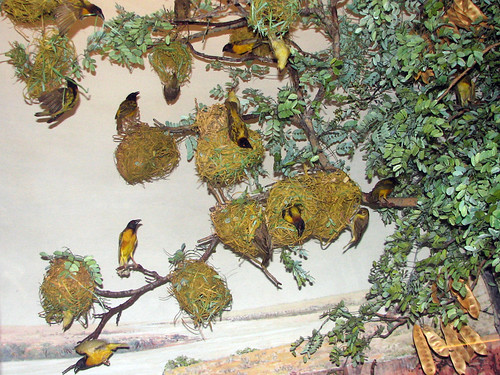
The Montezuma Oropendulas became my new favorites. What a wonderfully-named bird! From the accompanying text: “In common with many related species, Oropendulas breed in compact colonies. The carefully woven nests of grass are destroyed and entirely re-built each year. Oropendulas are inveterate thieves. Even the birds of a single colony must guard against robbery of nesting material by their neighbors.” Cheeky.

There were also smaller cases showing other bird species in their (sometimes former) habitat.
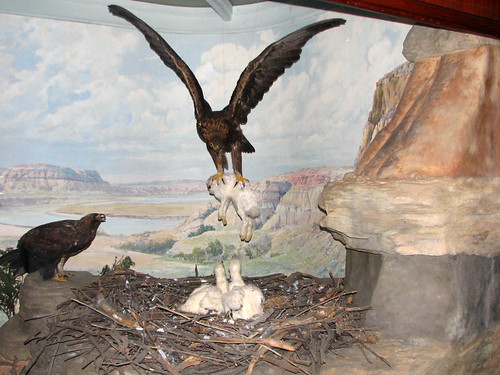
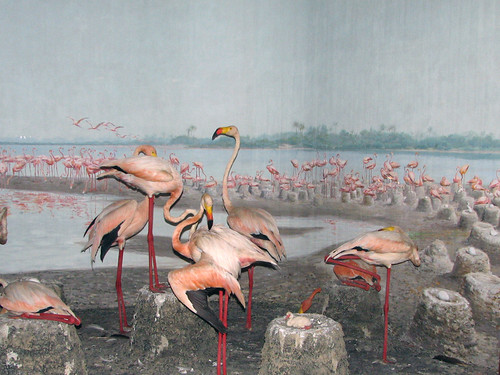

The Field also has cases and cases showing birds of the world as well as a huge selection of the birds found in North America.
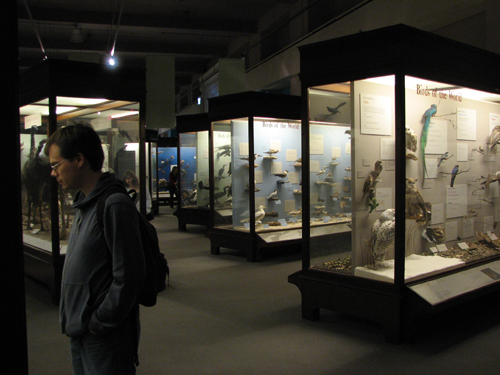
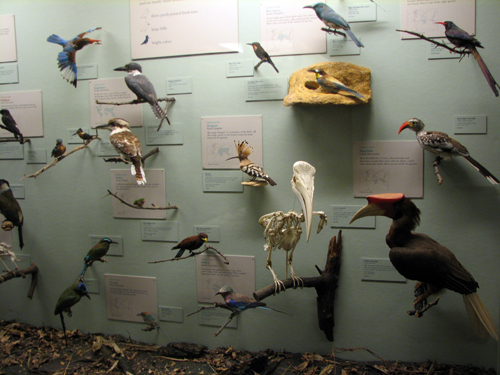
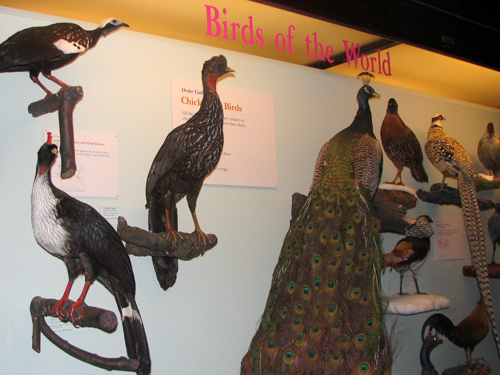
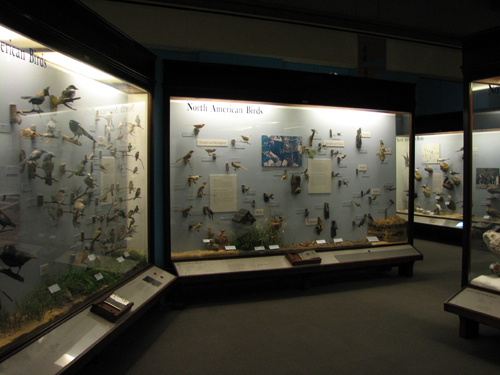
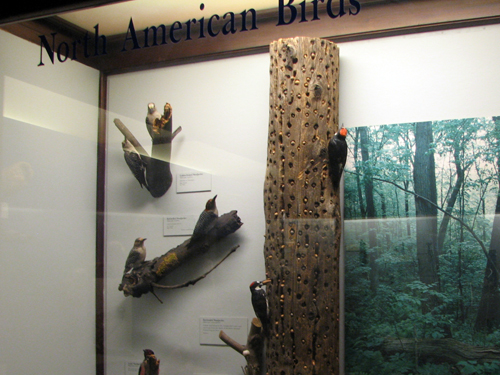
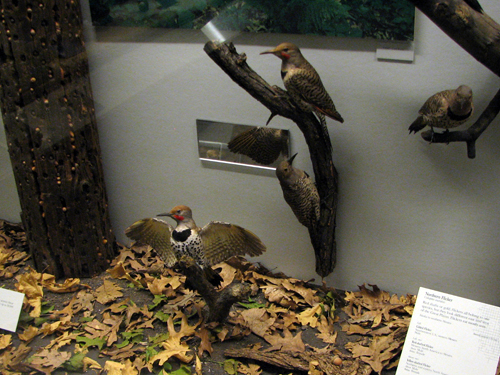
This display, Variation is the rule in nature, presented several different study skins of the same bird species to show how birds vary depending on factors including geography. The bottom of the display holds 12 different subspecies of Song Sparrow. Downy Woodpeckers, Towhees and Canada Warblers are also used. An accompanying informational sign explained study skins: “Birds used in this exhibit are made into study skins. These study skins, in which the head is in line with the body, wings folded, and feet crossed, are conventional for museum study. The method permits easy filing of specimens, available for study. The label, tied to each specimen, is very important. On it should be written the place and date of collecting and other available data.”
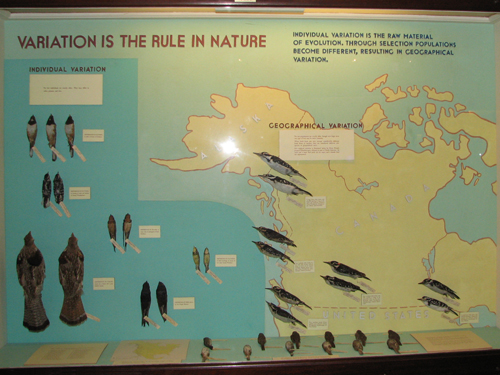
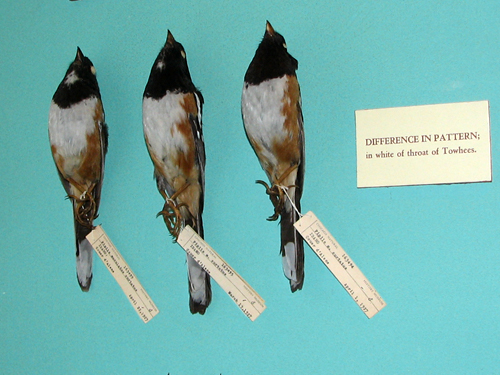
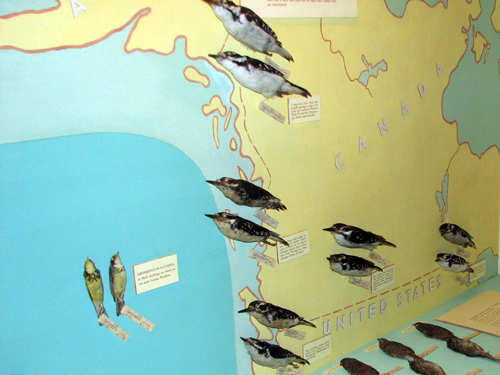
After visiting the bird and wild animal galleries, we enjoyed Glen Chilton’s Labrador Duck lecture and got our copy of his book signed. It was a great day out at the Field Museum!
I can’t believe the Midwest Birding Symposium ended nearly three weeks ago. One of the most charming things about the whole weekend was the location. I’d like to share some photos of Lakeside, Ohio, where the symposium took place.

Lakeside was founded as a private community in late August, 1873. Today Lakeside is an Independent Chautauqua, which is a sort of church-affiliated vacation resort. The season of the “Chautauqua on Lake Erie,” which normally runs 11 weeks, includes evening entertainment, educational seminars, and recreational activities for the whole family. The whole thing takes place in a most charming gated village full of well-preserved, historic buildings. The symposium occured about a week after the regular summer season.
The Lakeside Dock juts out into Lake Erie from the Pavilion. Close to here is Central Park, where the first meetings at Lakeside took place back in 1873. Today the park holds a playground, bandstand and even miniature golf. Along the lakeside at Lakeside, a small sitting area among shade trees and benches provided the idea circle for the symposium’s Big Sit.
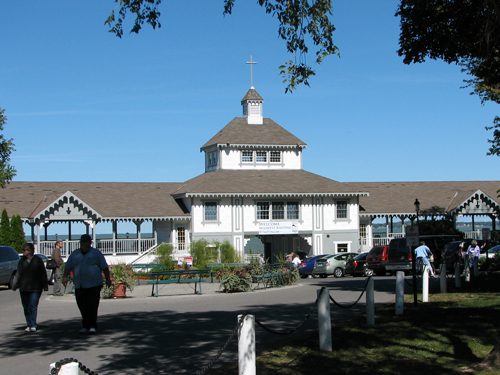
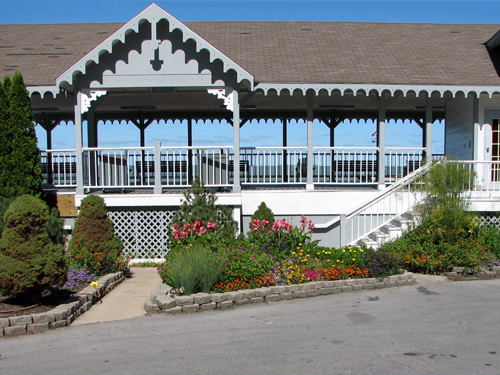
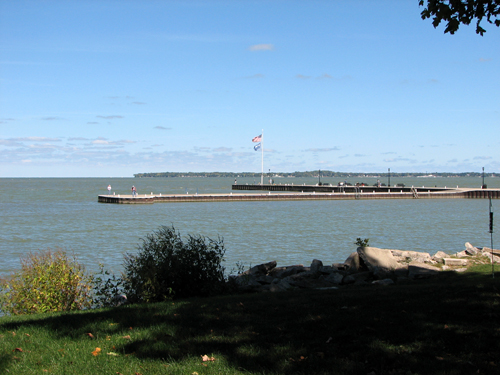
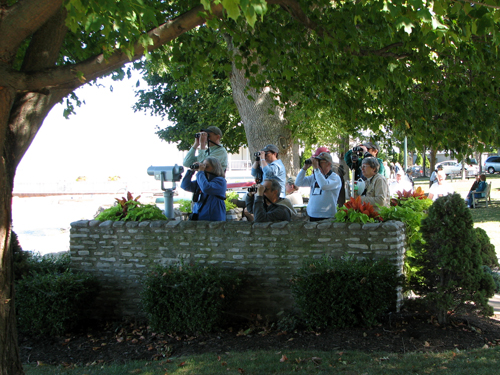
The venues at Lakeside, typically used for the Chautauqua’s programs and seminars, were ideal for the symposium’s line-up of speakers, as well as the weekend’s Bird Watcher’s Market and Artist Gallery. The 3000 seat Hoover Auditorium served as the main venue for symposium information as well as the keynote speakers.

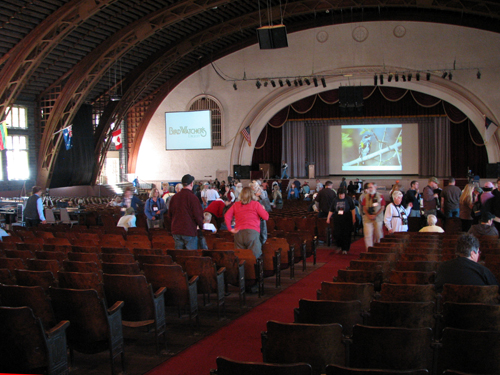
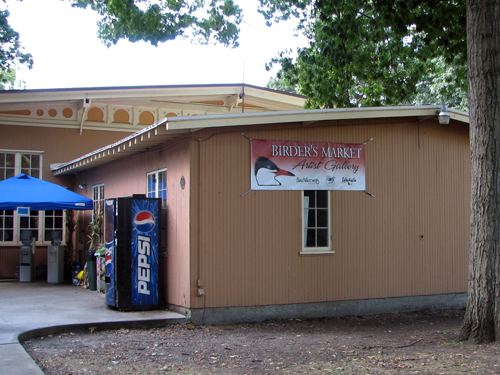


The streets of Lakeside are lined by historic old cottages and were busy with not only cars but plenty of golf carts, which acted as shuttles between the venues. The cinema and several restaurants, coffee shops and souvenir stores are located in the small downtown area.
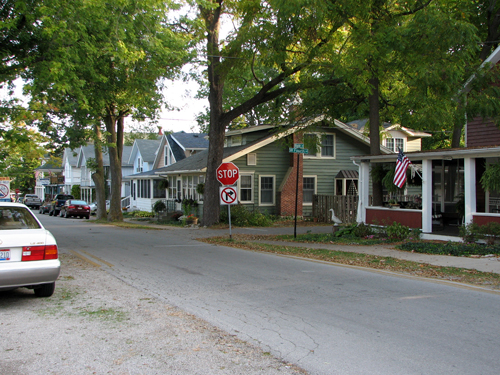
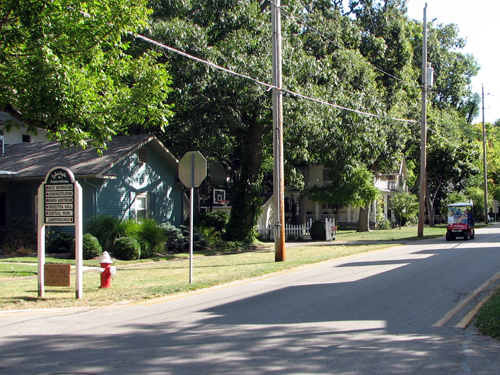
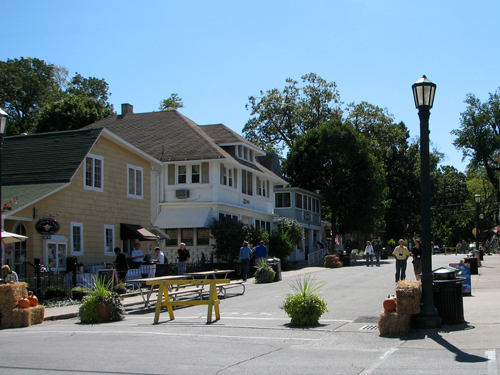
Lakeside has several lodging options; symposium attendees took over both Hotel Lakeside and the Fountain Inn early so we elected to rent one of the many cottages available for hire. It was great to be able to walk from our base to the venues throughout the day. Our cottage was probably suitable for nine or more people to share. The upstairs was a small maze of adjoining bedrooms and the large living areas had couches and chairs aplenty. Between the large kitchen and main living area there were two dining tables. The cute screened-in porch was also full of rocking chairs and benches, and I can image sitting there on a warm summer night must be very cozy indeed.
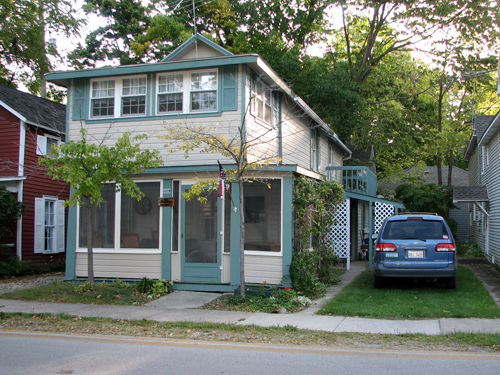
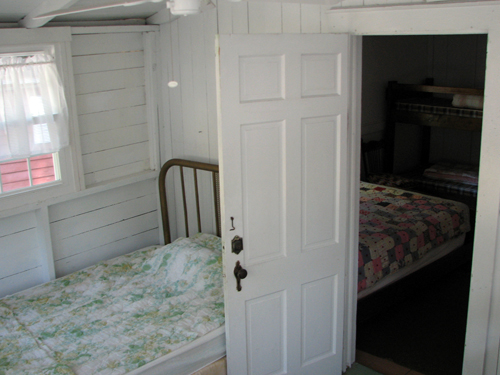
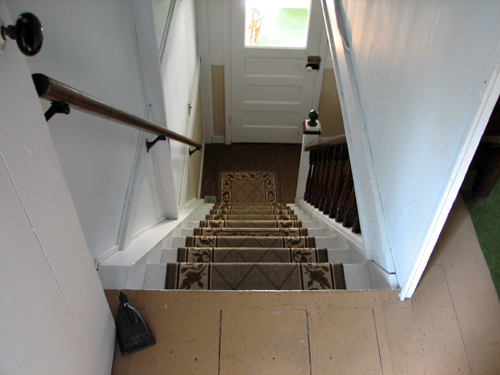
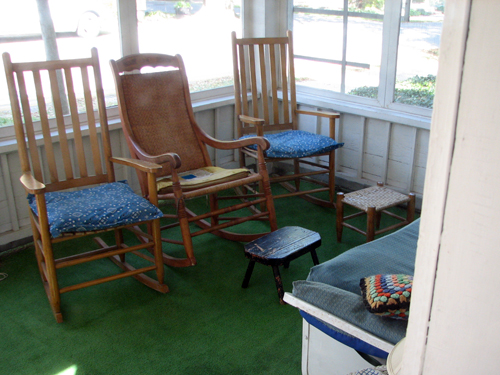
We enjoyed our brief time in Lakeside and look forward to attending the 2011 symposium there!
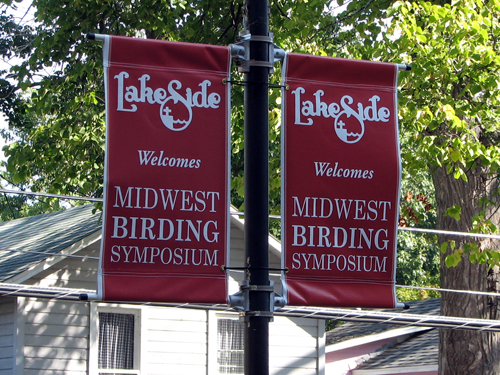
Several shots of birder-themed license plates were shown during the great slide show put together by Jeffrey Gordon on the last day of the Midwest Birding Symposium. I managed to capture a few photos of these myself.
I started a Flickr group for bird- or birder-themed license plates. Do you have any photos you can add to the pool? Have you ever seen one of the plates featured in the group? Do you have a birdy license plate yourself (maybe in one of the above photos)? I’d love to hear about it!
Warning: Graphic images of a hawk eating prey below
Our friendly neighborhood songbird terrorist has been making more frequent visits to our back yard. I’ve seen ‘our’ Cooper’s Hawk almost every day this week. One day I was filling the feeders when I stopped to examine a pile of grey feathers on the ground. I suspected Coop got one of our fat juicy little Mourning Doves and was calling back to the house to tell Arthur, when suddenly I saw a big shadow out of the corner of my eye. A Cooper’s Hawk took off from the grass path behind our fence, and I was fairly awestruck. Just moments later, as I was facing the house and talking to Arthur, he saw *another* Cooper’s Hawk take off from somewhere behind the fence. Two Coops at once?! Oh my.
Usually we can tell the hawk is around by the lack of birds at the feeders. Often we can then find Coop in the tree behind our yard, scoping for prey. Although he usually keeps a low profile, a couple of days ago we were surprised to find him perched on our large T-shaped feeder pole. On one side of the pole we keep a suet log which is favored by Downy Woodpeckers. There was Coop, king of the yard, perched on the highest pole. And there was Downy, frozen on the side of the log facing away from the hawk. Oh, how I wish I had gotten a photo of that! Coop finally took off flying to the right, and the Downy zipped around to the other side of the log in the same instant, in the blink of an eye. Here’s Coop perched on the post, without any frightened birds hiding below.
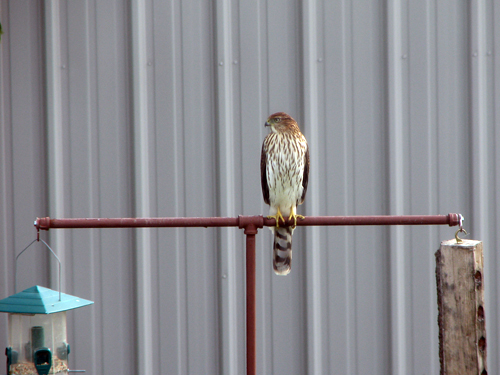
Yesterday Coop caught a House Sparrow and proceeded to eat it on one of our fence posts. This was the first time we’d actually seen the hawk eating, even though we’ve seen piles of feathers on the ground several times, indicating at least a scuffle if not an outright kill. Final warning: Graphic images & video of a hawk eating prey follow.
First there was a lot of plucking. Then came the eating. Soon a squirrel came and disturbed the hawk. First it seemed to be mantling over its prey; finally it flew off with lunch in talons.

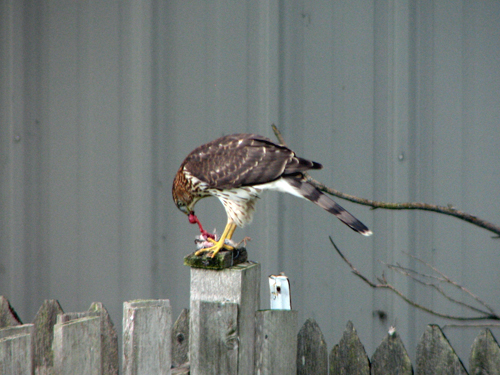
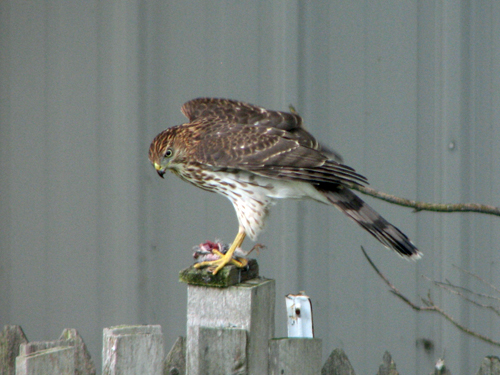
A symposium is defined as a meeting or conference for discussion of a topic, and so a main part of the Midwest Birding Symposium was the great lineup of speakers. Over Friday and Saturday I attended several keynote speeches as well as four separate, smaller break-out sessions.
Here are just some of the dynamic guest speakers in action.
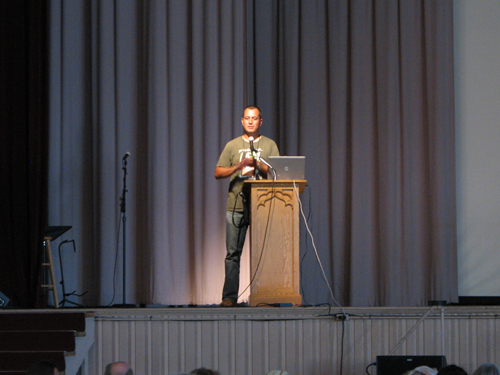
Alvaro Jaramillo‘s talk was called “Bird ID Outside the Box.” As a new birder I thought this might be too ‘advanced’ for me but the description intrigued me and I’m really glad I attended. The MBS program said of Alvaro’s speech: “This workshop will aim to teach a little bit of birding voodoo and other features to concentrate on while birding.” Part of Alvaro’s thesis is that we should get all we can out of birding, and enjoy the hobby in our own way. If you don’t like listing, for example, don’t do it. You don’t have to be a lister to be a birder. Want to watch the birds in your back yard? You’re a birder, too. He also presented some really neat research being done around brain function, memory and facial recognition and suggested we can apply some of those techniques to learning bird identification. Birding voodoo indeed!
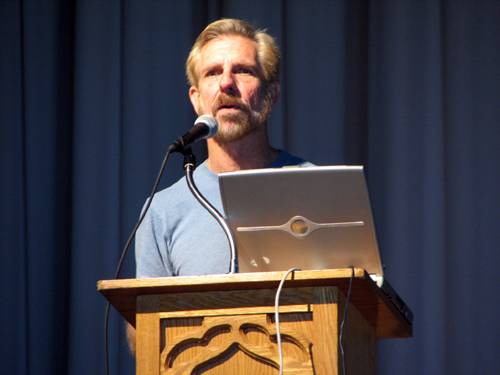
Kenn Kaufman spoke on “Flights Against the Sunset: Why We Need Birds.” He shared lots of reasons why we need birds (yes we do!) along with a fair dose of humor. He even impersonated a Mourning Dove at one point. Don’t believe me? See the video below!

Bill Thompson, III introduced the keynote speakers who appeared at Hoover Auditorium, sometimes in song. He also spoke about the process of creating his book The Young Birder’s Guide to Birds of Eastern North America.
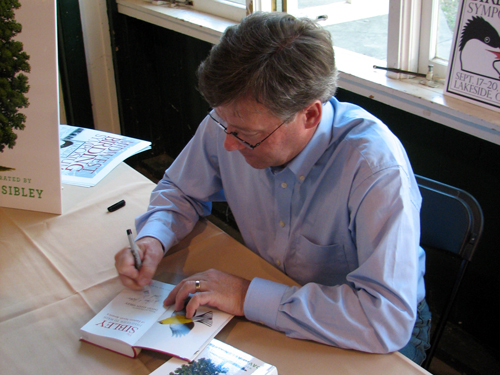
David Allen Sibley spoke Friday night about his new book, The Sibley Guide to Trees. He also generously spent two sessions signing books for legions of fans. It was fun to see that many people brought him several books to be signed: a pristine new copy of the tree guide along with a hopelessly tattered copy of The Sibley Guide to Birds
or another of his field guides.
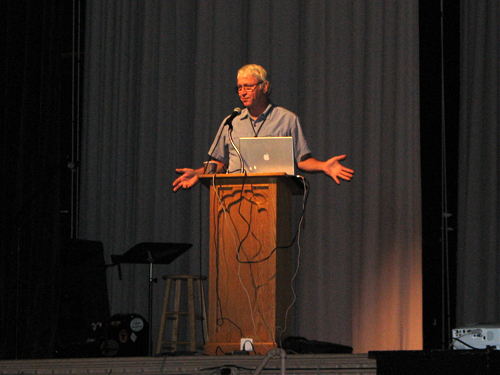
Lang Elliott has been recording natural sounds for over 20 years. He shared a great collection of bird calls, songs and hoots during his presentation.
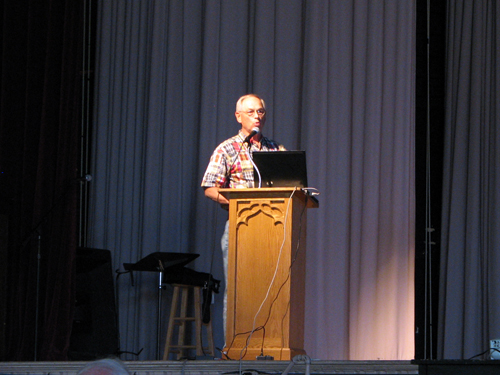
Wayne R. Petersen spoke about inland shorebirds. This was an information-packed talk featuring slides with lots of shorebird ID tips, trivia, photos and data.
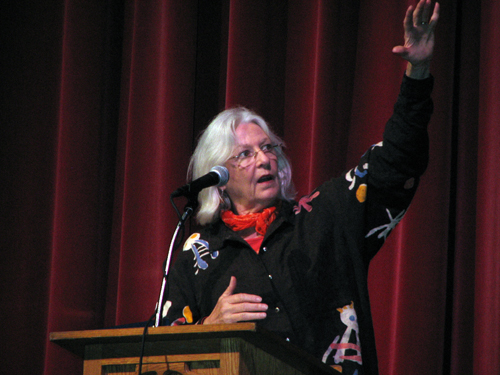
Actress Jane Alexander spoke on “Birding On and Off the Movie Set.” She shared a series of amusing anecdotes on the birding adventures she’s had while traveling the world, acting in movies, television shows and stage performances.

Al Batt‘s program was titled “Snippets from a Life Gone to the Birds.” He had an auditorium of birders laughing in the aisles with his tales of growing up in a big family on a farm, birding with children as an adult, squirrel troubles and more. Apparently a bat or two makes its home in the Hoover Auditorium of Lakeside and one made a rather dramatic flight across the top of the stage during Al’s talk. It was two Batts for the price of one.
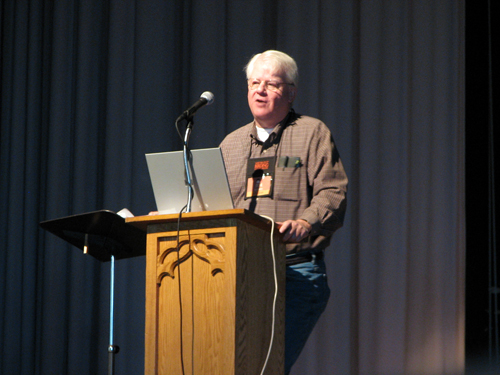
Jim Berry was the final speaker on Sunday morning, giving a program called “Roger Tory Peterson: Yesterday and Today.” This included two older videos of Peterson which were very interesting.
Unfortunately I didn’t manage to take any photos of two other speakers I saw during the MBS. Mike Bergin of 10,000 Birds spoke on bird blogging. He shared 80+ of the best bird blogs (I was very excited to get a shout-out). Author Scott Weidensaul gave a presentation called “Of a Feather: A (Brief) History of American Birding.” This was very entertaining, especially considering I had just read the book.
Finally, here’s a video montage of Bill Thompson III, Kenn Kaufman, Jane Alexander and Al Batt.
Friday morning during the Midwest Birding Symposium, we visited one of locations mentioned on the MBS program’s list of local birding hotspots: Marblehead Lighthouse State Park. We arrived before dawn and first watched the sun rise over Lake Erie.


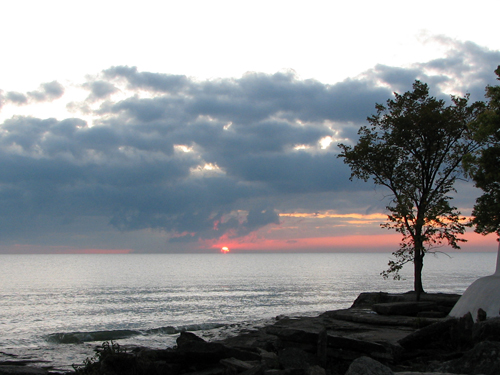
The 9 acre park is home to the oldest lighthouse in continuous operation on any of the Great Lakes. Marblehead Lighthouse dates from 1822; the park became Ohio’s 73rd state park in 1998.
Unfortunately the park was not too birdy that morning, although we did see this Red-bellied Woodpecker and got one lifer (Carolina Wren).
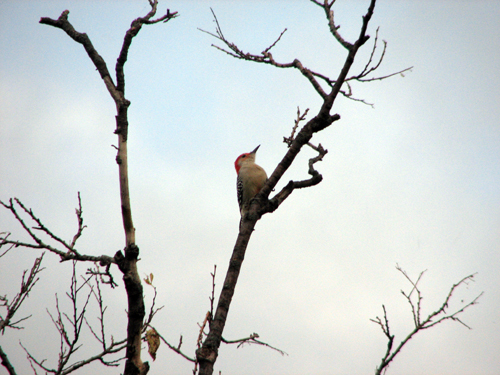
Before we left, I remembered to take a photo of the lighthouse itself. The sunrise at this lovely little park marked the start of another gorgeous day at the Midwest Birding Symposium.
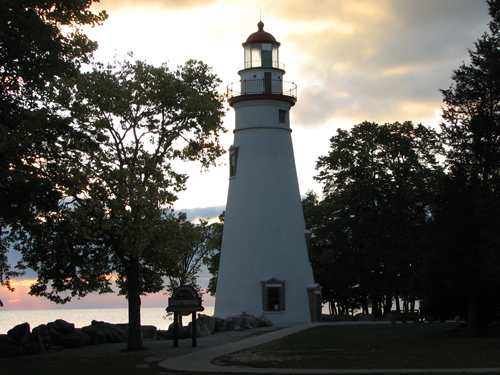
Visit Skywatch Friday to see other stories of the sky from around the world.
Here are some of the more interesting search terms that brought visitors to this site during September. You can see previous editions of this monthly post here.
There were lots of unusual searches for t-shirts & tops last month: 3 ad bird t shirt; spoon hoodie; hard core tank top; i live in oklahoma t-shirt; you hoodie; identify bird silhouettes t-shirt; spoon shirt beefy; and proud hawaiian tank tops. I don’t know what some of these mean, but these type of searches are often a good source of inspiration for designing new t-shirts for birdwatchers.
A few other apparel searches came up: owl sweatpants and womens panties penguin. Happily, one of those is already available in my shop.
At first I thought the search for hat bird house was another apparel search, but the person was probably actually looking for this funny novelty bird house.
Another oddball product search was child mountable binoculars. It would be handy to bring a young sherpa with you when birding, I guess.
I always find a lot of searches for terms related to Magnificent Frigatebird, but the term magnificent frigid bird was a first last month.
My favorite questions for last month were what birds hang upside down to feed? and what’s the difference between hummingbirds and penguins and how to carry a bird id guidebook? I really like that last question because I’m going to post a review of my birding bag very soon, so stay tuned dear searcher!
My old friend foto butts made another appearance. *sniff*
And finally someone searched for stuffed barred owl toy, which does not seem to exist anywhere. That’s too bad; the Barred Owl is my favorite owl and I think it would make a great stuffed animal. Have you ever seen a Barred Owl toy?
Along with several of their resident raptors, the wildlife rehabilitators at Back to the Wild brought along some rescued, permanent resident snakes, turtles and frogs to the Midwest Birding Symposium. There was also a display with Monarch caterpillars, chrysalises and butterflies, representing various stages in the amazing life cycle of the Monarch. Several of the butterflies were tagged, and we learned about the process of monitoring Monarchs as they migrate south.
The neatest thing here was that several of the chrysalises were very dark, meaning the butterflies were nearly ready to emerge. I was very excited to be there to witness a Monarch coming out. I just missed it on the video, but you can see this is a very fresh little butterfly.
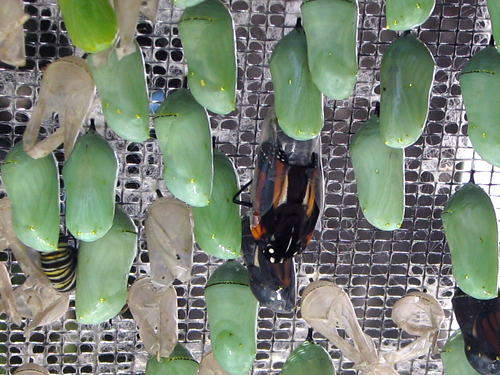
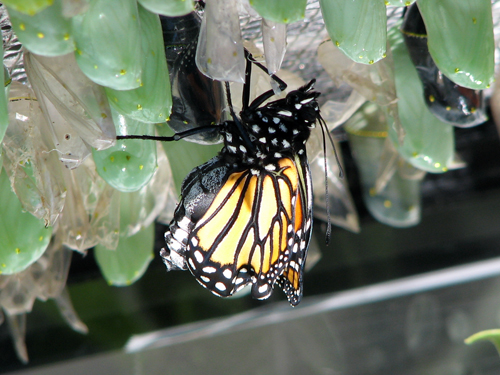
While at the BTTW display, we met a couple from California who asked if we could take their photo by some of the birds. They then returned the favor and captured the only photo of the both of us taken at the Midwest Birding Symposium!

One of my favorite things at the Midwest Birding Symposium were the visiting raptors from Back to the Wild.
BACK TO THE WILD® is a volunteer, non-profit wildlife rehabilitation and nature education center located in northwest Ohio. Its primary mission is to rehabilitate and ultimately release into their natural habitat, injured, orphaned and displaced wildlife.
I loved looking at these beautiful birds. They are all permanent residents at BTTW due to injuries which would prevent them from surviving in the wild. Aren’t they gorgeous?
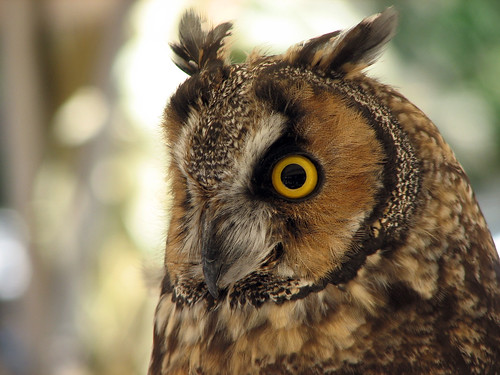


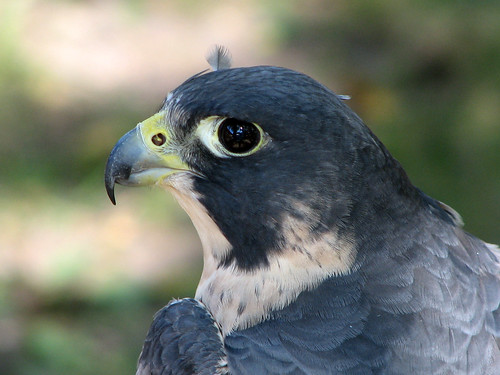
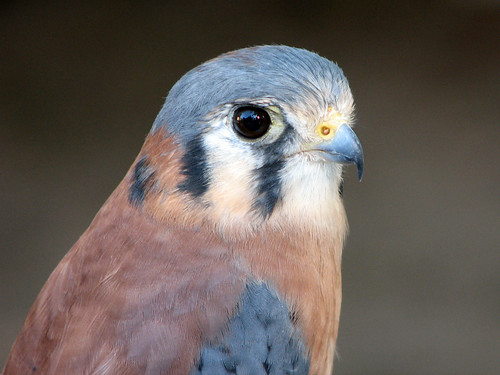
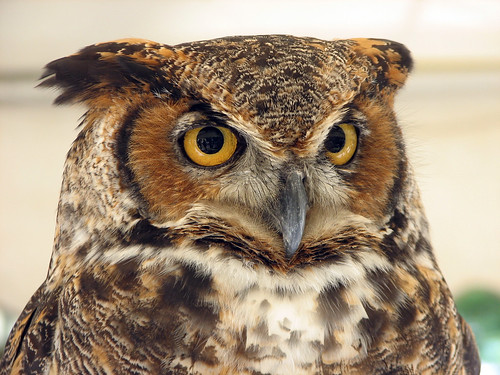


I was talking with one of the volunteers at the Back to the Wild stand and I learned that they do not name their birds. They do a lot of programs with children and decided not to name the birds so that the children wouldn’t get the idea that the birds are pets. I totally understand that reasoning, but I wonder if it isn’t very unhandy to have unnamed birds. How can you talk about them with someone else? You have to call them something, like “the blind eagle” or “the long-eared with the broken wing,” right? I know they give names to the birds at Barnswallow. If you work with education birds or at a rehab facility, do you name your birds? (Susan?) Why or why not?
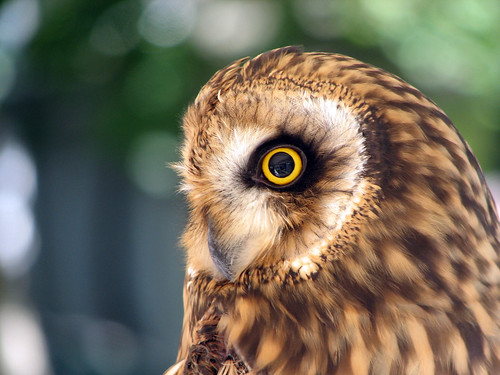

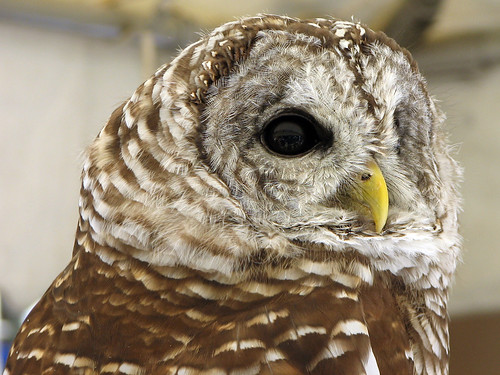
Adopting a bird or purchasing a walkway paver are just two of the ways you can help Back to the Wild with their important work. Here are some more ways to help.